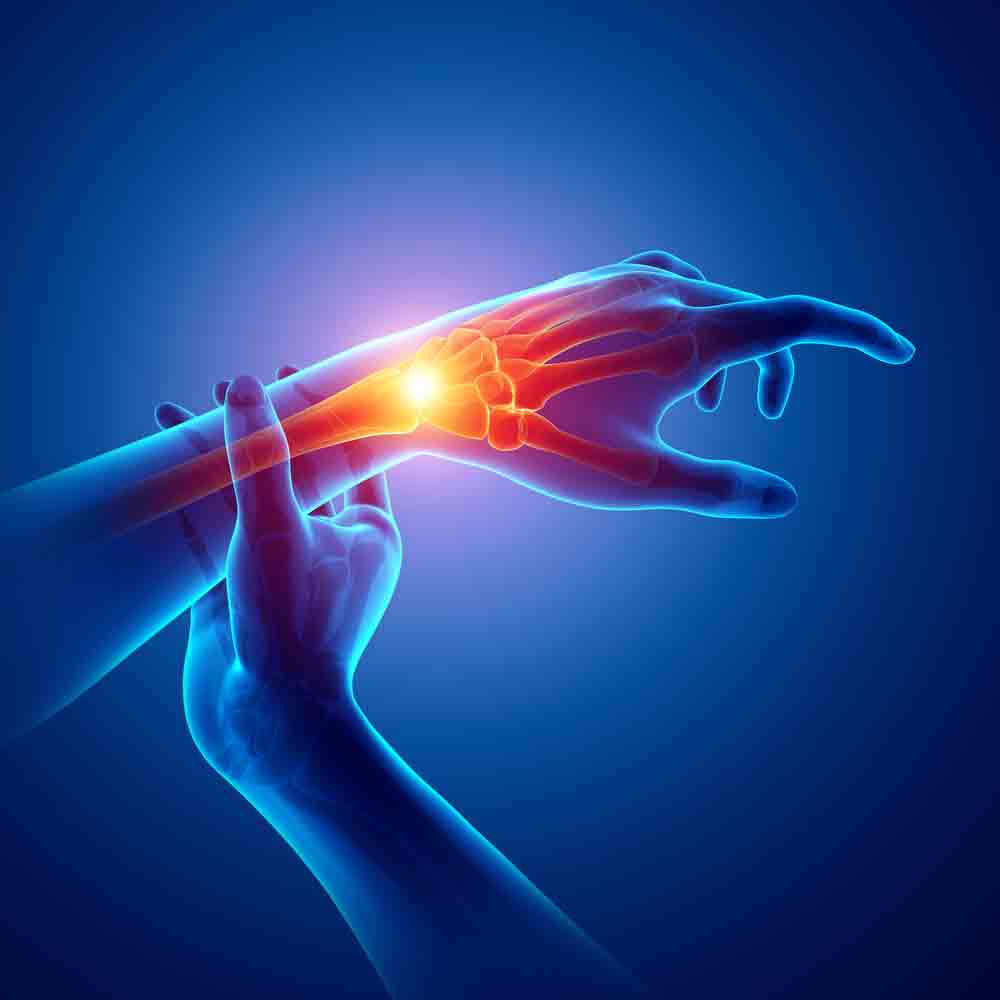Facing possible hand surgery for a nerve injury or carpal tunnel syndrome and perhaps you want to try Physical Therapy first?
Carpal tunnel syndrome (CTS) is a common condition of the wrist and hand that can affect the use of the whole arm. It is caused by pressure on the nerve at the base of the palm (median nerve). Because of the demands that people place on their hands and wrists, CTS is a common condition affecting 1 out of 20 Americans. Surgery for this condition is commonly performed on the wrist and hand. Fortunately for most people who develop CTS, physical therapy treatment can often relieve pain and numbness and restore normal use of the hand, wrist, and arm without the need for surgery.
SOL Physical Therapy Can Help Relieve CTS Pain!
SOL Physical Therapists work closely with other health care professionals to accurately diagnose and treat CTS. Symptoms of CTS are typical, and it is often possible to diagnose it without extensive testing. SOL Physical therapists are experts in the movement and function of the body and will conduct an evaluation to determine all of the factors that may be contributing to your condition. Our highly-trained team includes PTs who are:
- Experienced in treating people with arm and hand musculoskeletal disorders
- Experienced in ergonomics and work site evaluations. Ergonomics involves understanding the fit between a user (the person), the equipment, and the environment.
- Board-certified clinical specialists with advanced knowledge, experience, and skills that may apply to your condition.
How Can a Physical Therapist Help You Avoid Surgery?
If you have early-stage CTS, conservative care such as Physical Therapy will be recommended as a first step. Physical therapy treatment can be effective in reducing your symptoms and getting you back to performing normal activities. During your first visit with the physical therapist, be prepared to describe your symptoms in as much detail as possible, and say what makes your symptoms worse.
Depending upon the causes of your CTS, your therapy program may include:
- Education regarding:
- changing wrist positions (ie, avoiding prolonged bent wrist positions)
- proper neck and upper back posture (ie, avoiding forward head or slouching)
- safe use of sharp utensils, tools, or other implements, if sensory changes are identified
- “stretch breaks” during your work or daily routine
- Exercises to increase the strength of the muscles in your hand, fingers, and forearm—and in some cases, the trunk and postural back muscles
- Stretching exercises to improve the flexibility of the wrist, hand, and fingers
- Use of heat/cold treatments to relieve pain
- Use of a night splint to reduce discomfort
- A worksite review to assess your work area. For example, if you sit at a desk and work on a computer, it’s important for the keyboard to be in proper alignment to help avoid working in a bent wrist position.
- Increasing the size of tool and utensil handles by adding extra material for a more comfortable grip
- Anti-vibration gloves or anti-vibration wraps around tool handles, if vibration is a factor at your workplace
Your physical therapist will also consider your home and leisure activities, with recommendations such as wearing gloves to keep the wrist/hands warm and limiting sports that aggravate the condition, such as racquet sports, until symptoms resolve.
The goals of physical therapy are to reduce your symptoms without the need for surgery, to enable you to be as active and functional as possible, and to help you resume your normal work, home, and leisure activities.
Physical Therapy Following CTS Surgery
If the evaluation reveals that your CTS is more severe, or if your symptoms persist, your physical therapist may refer you to a physician for a surgical consultation. If necessary, surgery will be performed to release the band of tissue that is causing pressure on the median nerve. Physical therapy treatment is important after surgery to help restore strength to the wrist and to learn to modify habits that may have led to symptoms in the first place. Your physical therapy treatment may include:
- Exercises to improve the strength of the wrist/hand muscles and improve function
- Stretching to improve mobility of the wrist/fingers and improve function
- Scar management to keep the skin supple and flexible
- Education regarding appropriate posture and wrist position to avoid carpal tunnel compression in home/leisure activities
- A worksite visit or simulation to optimize postures and positions
Further Reading
The following articles provide some of the best scientific evidence related to physical therapy treatment of CTS:
Carpal tunnel syndrome fact sheet. National Institute of Neurological Disorders and Stroke.. Updated September 16, 2011; LeBlanc KE, Cestia W. Carpal tunnel syndrome. Am Fam Physician. 2011;83:952-958. Article Summary on PubMed; Jarvik JG, Comstock BA, Kliot M, et al. Surgery versus non-surgical therapy for carpal tunnel syndrome: a randomised parallel-group trial. Lancet. 2009;374:1074-1081. Article Summary on PubMed.

